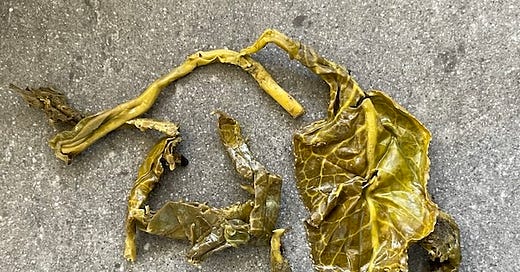Fermented Tea Leaves
Exploring laphet in Myanmar, fermenting tea leaves at home, finding laphet, a 🐇🕳️
A few weeks ago, I started reading The Tea Girl of Hummingbird Lane, a novel by Lisa See. I was immediately delighted by the luscious description of the cloud-forested mountains and ancient tea trees in the remote regions of Yunnan Province. (Though I do not live in anything close to a cloud forest, for the last few days, my home’s mountainous ridges have been shrouded in low clouds that hide and reveal trees in misty, ever-changing renderings of the forest in the first hours of light. This somehow amplifies my imagination.) I am also enchanted because I know this region is just east of the area we visited in Myanmar. Camellia sinensis, the tea plant, is thought to have originated in these mountainous regions in the borderlands of Myanmar and China. Reading this transported my memory to this region of the world and the tea plants that we saw. While we didn’t see the making of pu’er (or pu’erh) tea 普洱茶, the fermentation and processing of which is described in this book, we did see the arduous sorting and processing that is also described for the reader. We did see tea fermentation, but that was for laphet လက်ဖက်, fermented tea leaves for eating.
Back to Myanmar and laphet in a moment. This was the second time in the last few months pu’er came across my consciousness. I needed to understand this tea more. I spoke to a friend and she arranged a tea course at our favorite local tea shop two weeks ago. It was an amazing experience, and I learned I am only just beginning down a rabbit hole that could swallow me for years. I will write about the pu’er tasting next week, meanwhile back to the post I’d planned.
Meet Laphet
In the northern mountains of Myanmar, the climate and soils create a perfect combination to grow tea—not too hot, not too cold, not too wet, not too dry, with mountain soils that are not too fertile yet still rich and slightly acidic. Of all the tea-growing regions in Asia, it was here in ancient times that people started also to eat their tea leaves. Eating tea leaves is older than written history. Stories tell of indigenous tribes fermenting the leaves in bamboo tubes and other vessels. So many of the world’s ferments have origin stories that stem from haste that results in neglect that causes a seemingly magical transformation. The beginning of this practice is lost to time. Folklore indicates that tea was introduced into what is modern-day Myanmar during the Pagan dynasty, the Burmese kingdom that unified the regions, around the twelfth century. Somewhere along the way, laphet became a symbol of peace and an offering between warring kingdoms. It was shared and eaten after settling a dispute throughout pre-colonial times.
We went to Myanmar in December of 2016. The we, being Christopher and I with our youngest two children, who were 17 and 19 at the time. On our second day there, we met our first laphet thoke (tea leaf salad) at a small stand in the Yangon Zoo. If only I could take you down this tangential path of white tigers and hand-feeding wilted greens to the hippopotamus in a journey of the horror and grandeur of a colonial past. I only mention it because this is how ubiquitous laphet is as an afternoon snack. Laphet thoke is the nachos of Burmese snack bars. We sat in this surreal zoo, tiny chairs around a small table, and our knees hugged the edges as we bent over the salad. It was served with hot tea. It was delicious, and because of that, or the dizzying heat and long hours of jet-lagged walking that had landed us there in the first place, Christopher and I decided at that moment to eat laphet anytime we recognized it on a menu. It was love at first bite. (Our teenage children may not have felt the same way.)
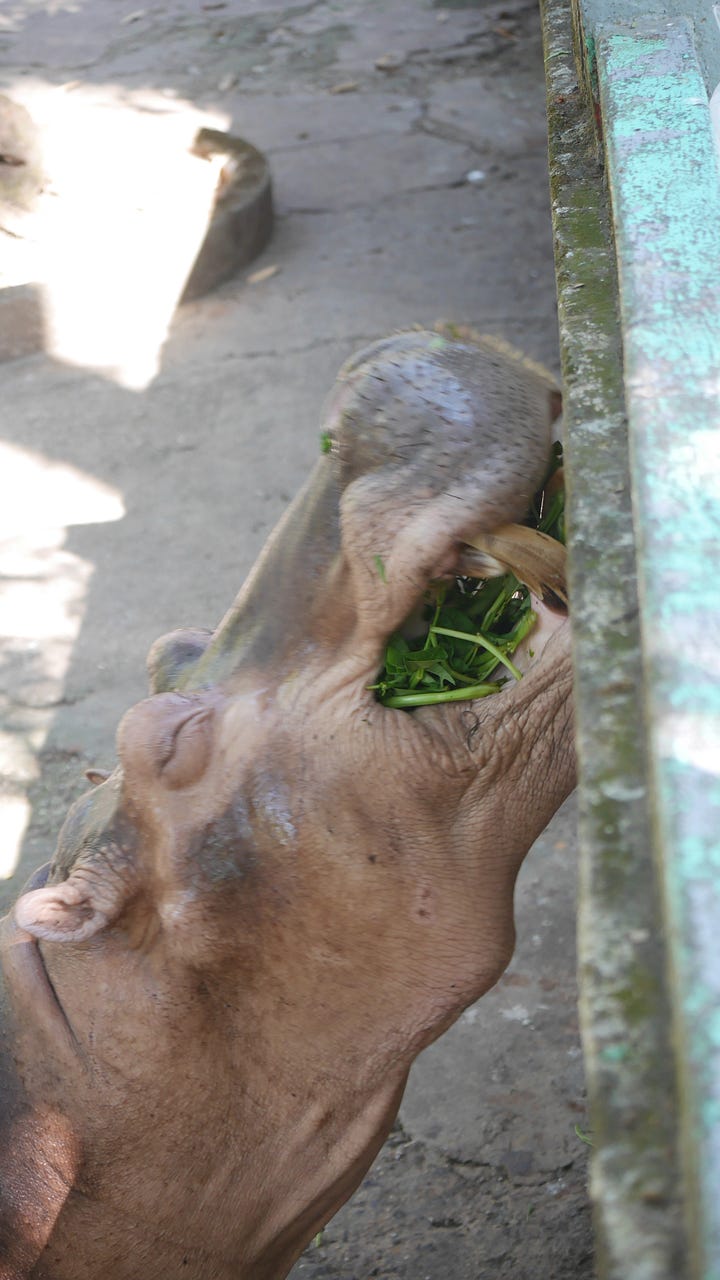
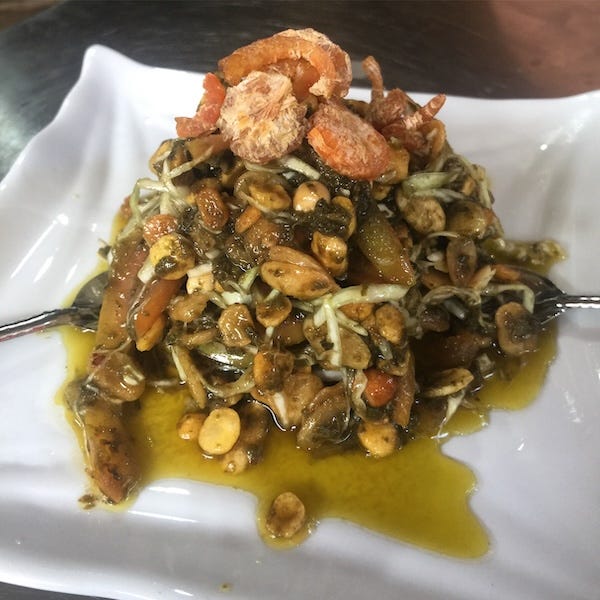
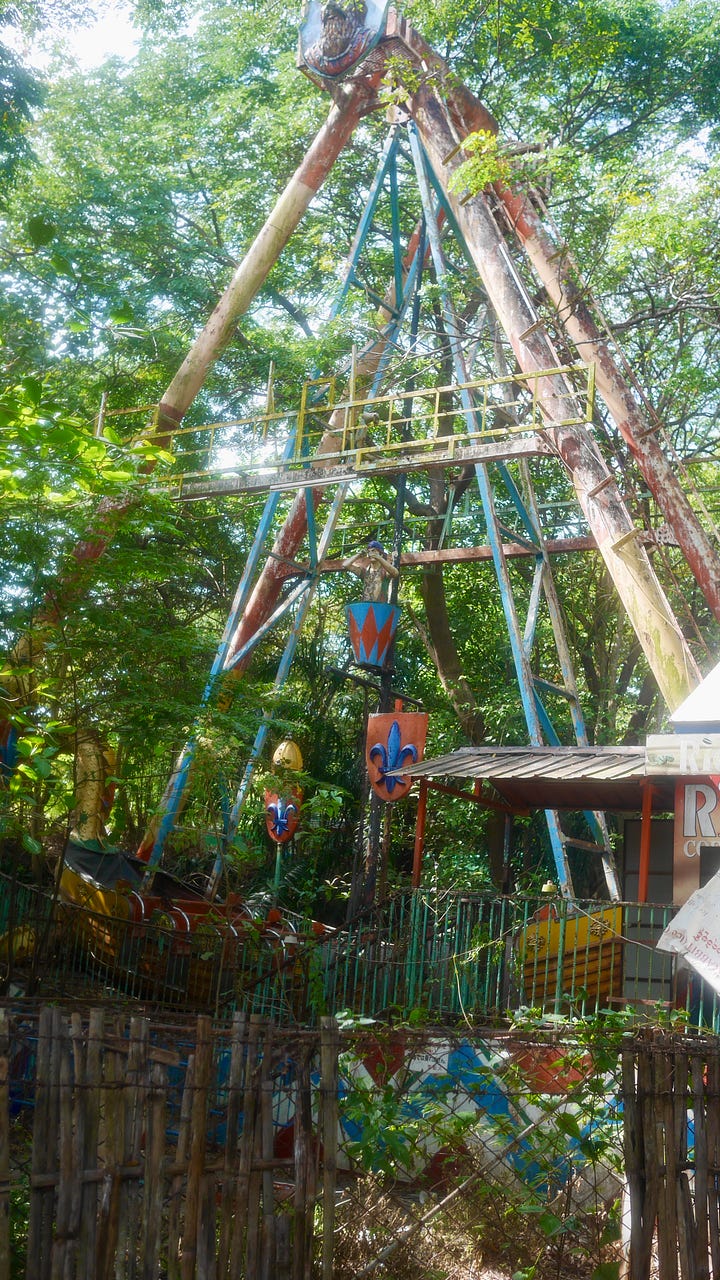

While it could be called the national dish because everyone eats it and crosses all social barriers, it is prepared differently from place to place. Two makers next door to each other using the exact same ingredients would come out with a unique plate of laphet. The spicy, salty, bitter, crunchy, oily bits all go together magically and cannot be compared to anything in Western culture.
Laphet thoke is a meal-like salad and ahlu laphet is the snack. The basics are similar but served differently. The snack is served in divided lacquer dishes, with each element separated like spokes around the center of fermented tea leaves, which have been flavored with garlic, chile peppers, salt, fresh lemon juice, and peanut oil. For the meal-like salad, the parts are served together piled in a bowl with a little bit of fresh cabbage and perhaps some fresh tomato. The elements are various deep-fried crispy crunchies; deep-fried garlic pieces, fried prawn bits, deep-fried peanuts, fried split peas or garbanzo beans, deep-fried shallots, and toasted sesame seeds.

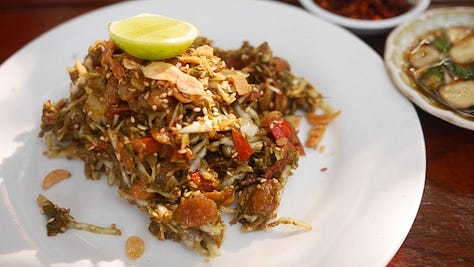
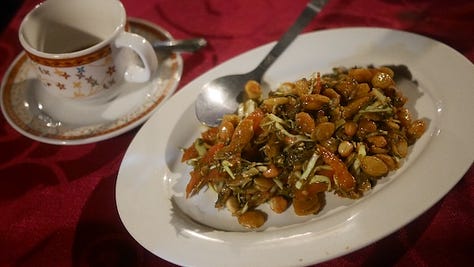
We were exploring Bagan and were due to go to Namshan in the northern mountains of the Shan state the next day when I received a message from my contact in the Shan state. “Sorry for my late reply due to a bad connection. I'm not sure if it is a good time to come here for you because a few fighting are happening around Kyaukme and a lot of Palaung people are coming to Kyaukme for their safety.”
Keep reading with a 7-day free trial
Subscribe to Fermenting Change to keep reading this post and get 7 days of free access to the full post archives.


